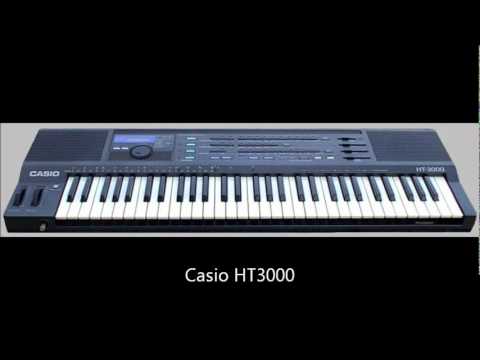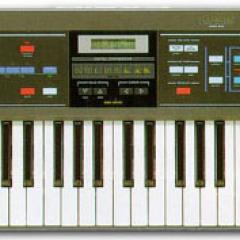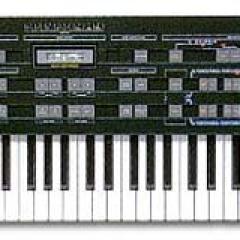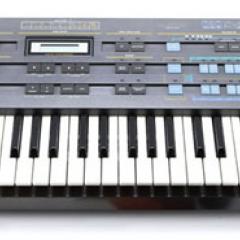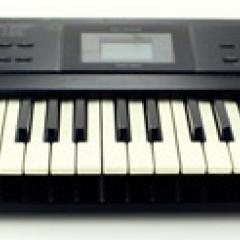Casio HT-3000

The Casio HT and HZ series are a very interesting group of synthesizers produced from 1987-1991. They use a very specific form of sound generation called "SD Synthesis". Short for "Spectrum Dynamic" SD Synthesis has some things in common with the subtractive synthesis we know and love. The synth takes a waveform and runs it through a real analog VCF (filter). There are ADSR envelopes for the DCA and VCF that shape the sound. And there is an LFO just like on a standard subtractive synth, although this LFO only modulates pitch (vibrato) and volume (tremolo).
Where things get interesting however, is in the choice of waveforms available from the synth engine. There are 32 incredibly varied waveforms, some sound very nasal or narrow, some like saw or square waveforms, some with an odd metallic timbre, and some feature white noise. It's still a mystery exactly how these waves are created, but experts suggest they contain a number of harmonically-rich pulse waves at different octaves, as well as a ring modulator and an analog noise source.
To make things even more interesting, these waves have pre-programmed amounts of PWM and amplitude modulation built into them. For example, one SD wave could contain two pulse waves fading in and out at different times. But you don't have to understand all of this to get the best out of the synth. The mystery and modulation of it all means you can just pick a preset and change the waves around and see what happens. The synth sounds are in the same ballpark as other DCO-synths of the time, and can even sound a little PPG-like on a good day. The filter is a bit weak for bass but adds a nice swoosh to some sounds. There is also a nice chorus effect on board. Additionally, being a home keyboard, it has built-in speakers, a Drum Machine and an Auto-Accompaniment mode (the lower tone is used for accompaniment). The drum sounds resemble the Casio RZ-1 8-bit drum machine.
The low point of the synth is in the programming. You have one big clunky rotary dial and a list of two digit parameters to edit (e.g.: 10 will be cutoff, 11 is resonance) and these parameters are not listed on the panel, so you need the manual with you at all times! MIDI is present, but limited to just 3-channels and has no SysEx support. Kind of a bummer from a synth with such a tedious programming interface.
The HT-3000 has several brothers (also released in 1987). They include the HT-700, which has 49 mini-keys instead of the 3000's 61 full-size keys. It also has a big brother in the HT-6000, which is a 4 DCO, 8 VCF and 64 waveform monster! (And the HT-6000 lists the edit parameter codes on front-panel.) Now, as no one really knows about the HT-series, they go for very little money and can be a great tool in your synth arsenal for unusual sounds!
Demos & Media
